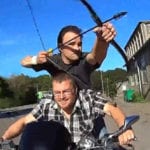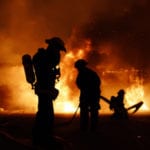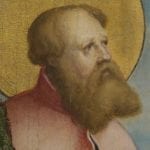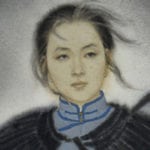 Weird Stuff
Weird Stuff  Weird Stuff
Weird Stuff  Our World
Our World 10 Ways Your Christmas Tree Is More Lit Than You Think
 Movies and TV
Movies and TV The 10 Coolest Stars to Set Sail on The Love Boat
 History
History 10 Things You Didn’t Know About the American National Anthem
 Technology
Technology Top 10 Everyday Tech Buzzwords That Hide a Darker Past
 Humans
Humans 10 Everyday Human Behaviors That Are Actually Survival Instincts
 Animals
Animals 10 Animals That Humiliated and Harmed Historical Leaders
 History
History 10 Most Influential Protests in Modern History
 Creepy
Creepy 10 More Representations of Death from Myth, Legend, and Folktale
 Technology
Technology 10 Scientific Breakthroughs of 2025 That’ll Change Everything
 Weird Stuff
Weird Stuff Ten Bizarre Facts About The Doge Meme
 Our World
Our World 10 Ways Your Christmas Tree Is More Lit Than You Think
 Movies and TV
Movies and TV The 10 Coolest Stars to Set Sail on The Love Boat
Who's Behind Listverse?

Jamie Frater
Head Editor
Jamie founded Listverse due to an insatiable desire to share fascinating, obscure, and bizarre facts. He has been a guest speaker on numerous national radio and television stations and is a five time published author.
More About Us History
History 10 Things You Didn’t Know About the American National Anthem
 Technology
Technology Top 10 Everyday Tech Buzzwords That Hide a Darker Past
 Humans
Humans 10 Everyday Human Behaviors That Are Actually Survival Instincts
 Animals
Animals 10 Animals That Humiliated and Harmed Historical Leaders
 History
History 10 Most Influential Protests in Modern History
 Creepy
Creepy 10 More Representations of Death from Myth, Legend, and Folktale
 Technology
Technology 10 Scientific Breakthroughs of 2025 That’ll Change Everything
10 Firefighters Who Are Seriously Badass
Firefighters don’t get recognition for sitting around and picking their noses. They get it for being seriously badass. They run into burning buildings, save children from high-rises, rappel down roofs like ninjas, and perform a host of other acts of courage across a variety of dynamic scenarios.
In this list, we’ll cover real-life firefighters who went above and beyond the call of duty. Whether jumping from planes, leading men to survival, or even serving their country on secret missions, the following feats belong in action movies. A number of these heroes disregarded injuries to themselves in order to save the lives of others.
10 Deanne Shulman—First Female Smokejumper
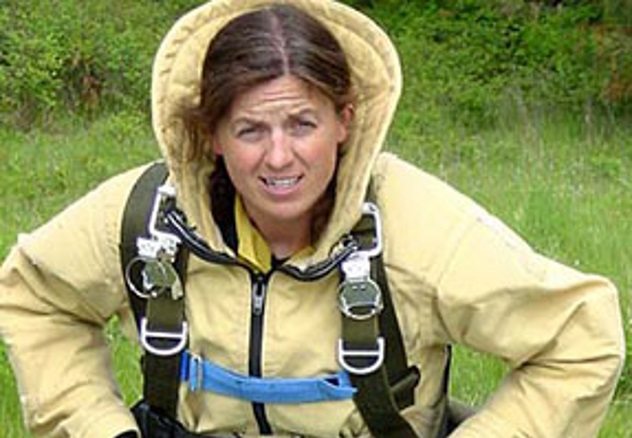
So-called “hotshot” firefighter crews (trained to fight fires in remote areas with little logistical support) are considered some of the most elite units in the country and have been referred to as the Special Forces of firefighting. Smokejumpers are a national resource to combat the growing number of forest fires in the US each year. When fires are nearly impossible to reach on foot, are spreading rapidly, or have unknown fire patterns, the smokejumpers are tasked with the job. They jump out of perfectly good airplanes carrying all of their gear on their backs, which often exceeds 45 kilograms (100 lb). They act as the eyes on the ground and help coordinate other assets to their location.
Deanne Shulman officially became a rookie smokejumper in 1981, 40 years after the very first experimental smokejumper launched himself into a fire.[1] In 1979, she passed the rigorous selection course, but she washed out of training because she failed to meet the height and weight requirements at the time. She was shy of the minimum weight by just 2.3 kilograms (5 lb).
Shulman transcended the stereotypes of women in male-dominant professions. As of 2013, there were more than 400 smokejumpers, with 27 being women. As the number continues to rise, Shulman will be credited with overcoming impossible odds to prove that women are just as capable as their male counterparts.
9 Stuart Roosa—Responsible For Moon Trees

Stuart Roosa, like any astronaut, lived a life fueled by risk-seeking adventure and challenge. Before becoming an astronaut, he served in the Forest Service as a smokejumper, fighting fires in California and Oregon. Roosa then served in the United States Air Force as a test pilot before transitioning to NASA.
In 1971, to pay homage to his former life as a smokejumper, Roosa carried a number of different tree seeds into orbit aboard the Kitty Hawk for the Apollo 14 mission to the Moon. Though he didn’t plant the seeds on the Moon, they did survive the rigors of space and are sprouting high near Kennedy Space Center today.[2]
Second-generation Moon Trees were also planted near the Tomb of the Unknown Soldier in Arlington National Cemetery to honor the life of Stuart Roosa, who passed away in 1994. Moon Trees are symbols that represent the extraordinary gallantry of those involved in the mission of landing on the Moon.
8 Bill Heenan—Saved A Falling Child With One Arm
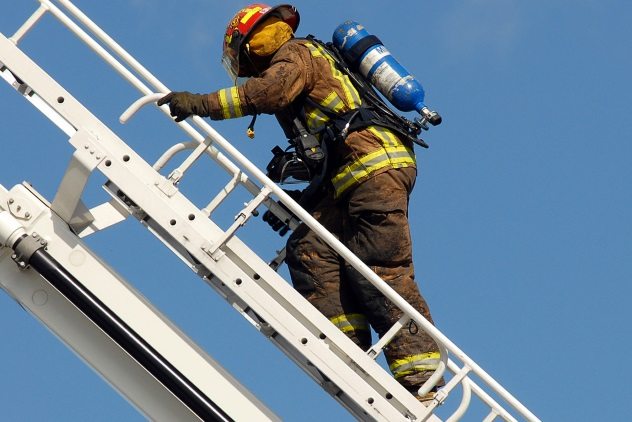
Bill Heenan probably got praise from many of the wide receivers of the Chicago Bears after he saved the life of a child with a one-arm snag as the girl jumped out of a window six stories up. In 1996, a ten-story apartment building in the heart of the city of Chicago became engulfed in flames, with smoke billowing through every crevice of the building. The heat and smoke became so bad that those who were trapped in the higher floors started jumping to escape being burned alive.
Few survived the impact of the pavement.
Heenan, five stories high on the ladder of one of the department’s ladder trucks, positioned himself near a window as he saw an eight-year old girl emerge from the thick black smoke. She leaped near Heenan but to the side of the ladder. Heenan later stated in an interview that he simply stuck out his arm and hoped he could reach her. Miraculously, he caught the 36-kilogram (80 lb) falling child with one arm and slowly lowered her to safety.[3]
And to think that all those scenes in movies of catching someone mid-air were considered bogus . . .
7 Smokejumpers Secretly Recruited By The CIA
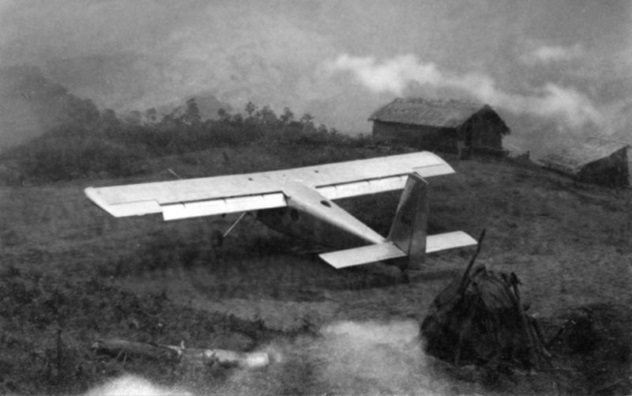
Sworn to secrecy, many of the men who worked as smokejumpers and contracted with the CIA in the early 1960s couldn’t tell their families of the work they were doing. Nor could they tell them where they were going. But for David Bevan, Darrell Eubanks, and John Lewis, they were up for the task to serve their country abroad.[4]
The CIA formed the Air America Program, which recruited current and former smokejumpers to utilize the skills they honed over the years as elite firefighters. Only in May 2017 were these three men were recognized for their courageous efforts in service of the CIA as they fought in a secret war in Laos. They were praised for conducting missions until their unfortunate death as a result of a plane crash in 1961.
In order to receive a star on the CIA’s Memorial Wall, one must give their life for the country while actively serving. Many of those stars on the wall have not made the public limelight because their names are still classified. At the moment, the Memorial Wall has 125 stars.
6 Steve Buscemi—Helped Recovery Efforts At Ground Zero Shortly After 9/11
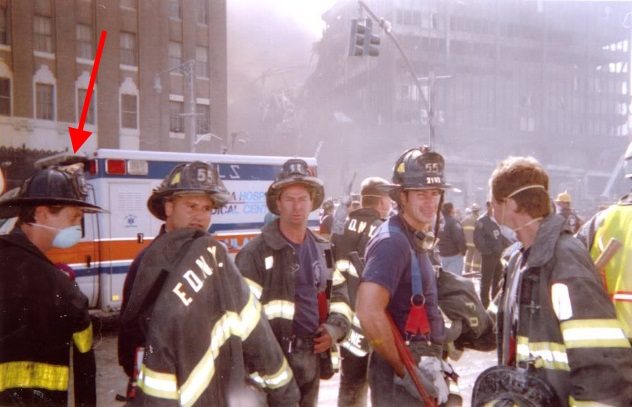
Steve Buscemi is known for being a humble guy in Hollywood. He appeared in notable films like Reservoir Dogs, Fargo, Monsters, Inc., Billy Madison, and The Big Lebowski, to name a few. Before acting, Buscemi served in Little Italy, New York City, with Engine 55. He served for four years before jumping all-in on his passion for acting.
When the terrorist attacks of September 11, 2001, occurred, Buscemi went back to his old engine company and volunteered his time at Ground Zero. What makes Buscemi a badass is that he avoided interviews or pictures of himself. He didn’t do it for publicity but rather out of respect for his fellow brothers and sisters who were lost on that fateful day.
Buscemi supports many 9/11 charities, including Friends of Firefighters, which helps provide wellness to active and retired firefighters along with their families. In an interview at one of the charity events, he said, “Firefighters are great at helping other people; they are sometimes shy of asking for help for themselves if they need it.”[5]
Buscemi continues his love for acting today as well as supporting the firefighter community that he holds dear to his heart.
5 Gary Dahlen—Rescued Trapped Wildland Firefighters
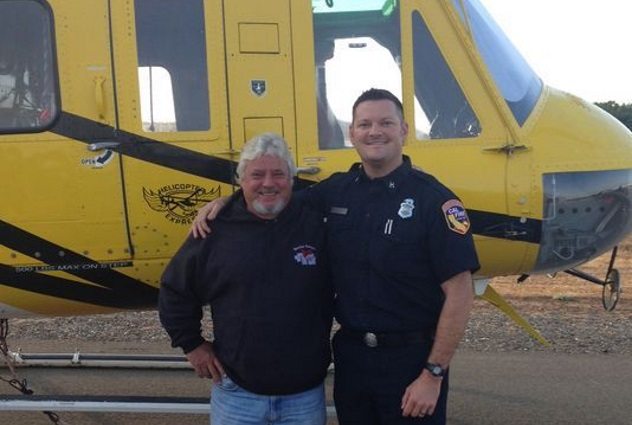
In all the years of piloting helicopters for wildfires, Gary Dahlen’s fears became a reality when the events of September 15, 2014, mimicked those of the tragedy the previous year, where 19 Prescott wildland firefighters of the Granite Mountain Hotshots perished after deploying their fire shelters. Fire shelters are used as a last-ditch effort for survival by those on the ground who are trapped and surrounded by flames. After receiving the call in September 2014 at his firebase in California, Dahlen (pictured left above) received GPS coordinates to what would be later known as the King Fire in Arizona.
Dahlen’s stomach dropped when the details slowly started coming in.
He expected that he had only minutes to fly in and drop much-needed water to suppress the hellish flames barreling toward 12 firefighters who were exposed in the open. After flying for what seemed like forever, he eventually saw the faint silver fire shelters deployed on the ground. He radioed the fire captain in hopes that they could hear him. And miraculously, they did.
Dahlen knew his bucket of water would do little to stop the 30-meter (100 ft) wall of flames approaching the 12 men. He searched for an escape. About 180 meters (600 ft) to the north was a clearing that proved to be their only way out. Dahlen radioed the captain and told them they had no more than three minutes to sprint for their lives.
The 12 men got out of their shelters, draped them around their bodies, and sprinted toward the clearing, all while looking up to see a hovering yellow helicopter leading the way.[6] All 12 firefighters made it to safety, and at the end of the road was a pilot standing next to a yellow helicopter waiting to greet the men who barely escaped death.
4 Jason Durbin—Saved A Woman Trapped 28 Floors Up
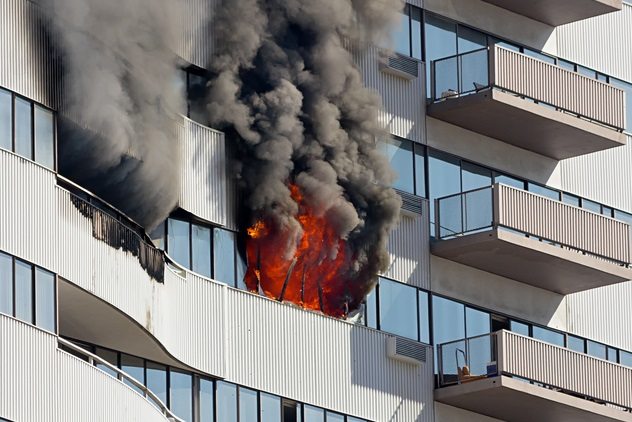
In 2009, firefighter Jason Durbin was working as a private ambulance driver as a side job in Chicago when he saw smoke rising from the roof of a building. Unsure if it was steam or smoke, he got closer and saw flames through the window. He made the split-second decision to charge into the building and up the stairs to the 28th floor. Mind you, he did this with no gear to protect himself from the toxic fumes or heat from the fire. Along the way, he ran into a man carrying a baby. The man thought his neighbor might be in trouble.[7]
Durbin approached the door, took a few deep breaths, and crawled as fast as he could while searching for the missing woman inside. He accidentally kneed her in the blinding confusion, picked her up, and threw her over his shoulder as he scampered his way down the 28 flights of stairs he came from.
You or I would probably take the elevator, but not Durbin. The selfless act of courage in a moment’s notice saved the life of a woman who probably wouldn’t have survived by the time other firefighters would have arrived. Durbin received a Firehouse Heroism Award in 2010 for the very first rescue of his career.
3 Peter Demontreux—Charged Through Flames To Save A Man

Peter Demontreux is a New York City firefighter who responded to a call of a structure fire in Brooklyn in 2010. The fire was so bad that the sensor indicating the amount of heat the fire was circulating started to melt against his protective suit. He heard a man screaming near a window but couldn’t find a route to get to him. With each footstep through zero visibility that Demontreux moved forward, the heat became more intense.
As he crawled on his hands and knees through the kitchen, he saw the man hanging half his body out the window trying to get a breath of air. Demontreaux grabbed the man. He later stated in an interview, “He was at my left side; we go to the front room, and the whole thing turns orange. It was like someone turned the lights on.”[8]
The flames, described as “1,000-degree heat,” were so hot that Demontreux’s bunker coat couldn’t completely protect him. He moved as quickly as he could as the flames burned his body. He would later describe the feeling of his face being burned as like being poked with needles. Demontreux got the man to the window, onto the ladder, and immediately into an ambulance that rushed toward the hospital. The man suffered second-degree burns over 40 percent of his body, but he survived.
Demontreux would later receive the Public Safety Officer Medal of Valor from Vice President Biden at the White House.
2 Jack Pritchard—The Most Decorated Firefighter In FDNY History
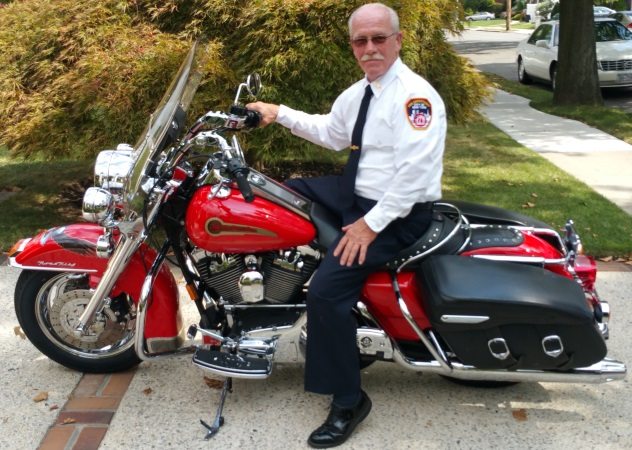
Where to begin with telling the story of the most decorated firefighter in the history of the New York City Fire Department? That title alone should hold a lot of merit, especially after seeing the types of valor that were highlighted so far on this list. Let’s first begin by stating that Jack Pritchard wasn’t immune to fire, though he sure acted like it. At the start of his career, he helped save a child with mental disabilities trapped on the third floor. He sprinted to the floor without an oxygen mask, realized the situation was dire, and smothered the child with his jacket as he jumped down to the first floor. His teammates sprayed water on them as they were rushed to the burn unit of the hospital.[9]
He was later given his own command and held his men to the highest of standards imaginable. Rescue 2 was an elite unit that specialized in going into burning buildings and saving any living life-form that occupied the structure. In 1992, he didn’t wait for orders and went into a building to find a man on fire in his bed. He extinguished the man and dragged him out of the building by himself. In 1998, Pritchard risked his life yet again when he learned a baby was left in the crib of her room. With what we’ve seen so far of Pritchard, we can assume that he was the first person to volunteer for the job.
And we are right. He noticed the baby was still alive when he reached the crib but was unable to pick the baby up without further risking burns to its body. Instead, Pritchard grabbed the entire crib with his bare hands and, despite severely burning his hands on the melting crib, dragged it outside to his teammates. He would receive his second Bennett medal, which is the highest medal of valor in the New York City Fire Department.
Pritchard retired in 1999 and is considered one of the greatest firefighters to have ever lived.
1 Eddie Loder—The Most Decorated Firefighter In The History Of The Boston Fire Department
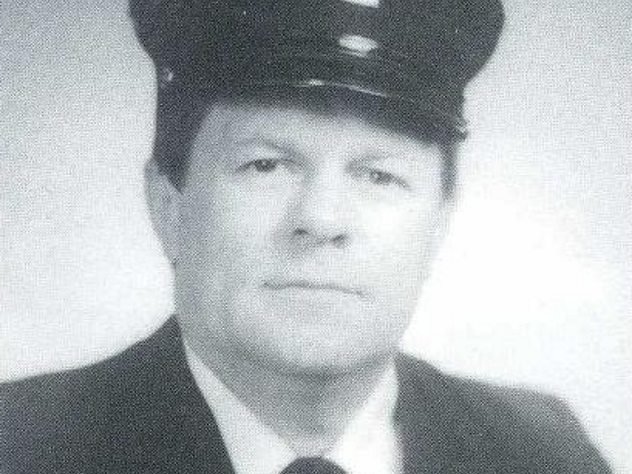
In 1987, Edward T. Loder of the elite Rescue Company 1 of the Boston Fire Department was awarded the Roll of Merit when he and members of his unit rappelled down an elevator shaft to save two trapped men stuck between the fifth and eighth floors.[10] They managed to fit the men, who were working maintenance on the building, through a space as small as 0.6 meters (2 ft) square.
Three years later, Loder was awarded the Walter Scott Medal for Valor for rescuing a woman in a manner so legendary it would be considered unrealistic if it were put into a film. A woman was threatening to jump from the windowsill of the Ritz-Carlton Hotel, 55 meters (180 ft) above the ground. After two hours of unsuccessful negotiations, Loder linked up his rappel system around his body, lowered himself just out of the woman’s field of view, pushed off the side of the hotel, and kicked the woman into the room with his feet.
Loder went on to earn the Roll of Merit three more times in his prestigious career in 1993, 1998, and 2001.
Matt writes about pop culture, history, and everything awesome. He is the founder of the first Human Hall OF Fame and has a passion for training, new trending cuisine, and a well-placed Happy Gilmore joke. Follow him on Twitter @TheAlbumWeb or check out his blog at www.thealbumweb.wordpress.com.
Read more about firefighters and their actions (both good and bad) on 10 Surprising Facts About Firefighters and 10 Firefighter Arsonists.
